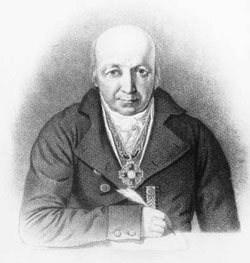Russia's Colony
Russia's interest in Alaska was due to the natural resources that could be turned into economic profit. For all the time the Russians were in Alaska, fur-bearing sea and land mammals were the main resource exploited. After 1741 wealthy Russian merchants put up money to pay experienced Siberian fur traders to voyage to various Aleutian islands in order to trade for pelts. The investors then traded most of the furs to the Chinese for a handsome profit; few of the fur trappers, however, became rich.
The traders took sea otter, black and other foxes, and fur seals. The fur traders did not hunt the animals; instead they forced Aleut hunters to do the work. Often the Russians took Aleut women and children as hostages while the hunters gathered pelts. While not all the encounters between the fur traders and the Natives were hostile, many were, and the Russians often brutalized Aleuts who resisted their demands. In addition, the Russians, like other Europeans wherever they encountered Native Americans, brought diseases not known to the Natives, who did not have or had lost traditional immunities. Throughout the Americas, and in Alaska, disease killed more Natives than any other single cause.
Links:
- Arctic Studies Center - Sea Otters
- Russian American Reader
The voyages from Siberia to America were expensive. Investors worked to save costs and increase their profits by forming partnerships. Eventually two groups came to dominate. One group, led by Gregorii Shelikhov, established the first permanent Russian post in Alaska, on Kodiak Island in 1784. From there Shelikhov sent hunters into Cook Inlet and Prince William Sound. They traded with local Natives, sometimes in a friendly manner, sometimes not. Shelikhov's chief rival, Pavel Lebedev-Lastochkin, established several posts in Cook Inlet, at the mouths of the Kasilof and Kenai Rivers, on the west side of the inlet, and near the mouth of Eagle River. Eventually Shelikhov took over all of these posts.
Initially, the Kodiak Islanders resisted Shelikhov's invasion into their territory. But Shelikhov had superior arms and thoroughly defeated the Natives. Later, he attempted to improve relations with them exchanging gifts and trading with them on fair terms.
In 1799 the Russian government established a single, government sponsored company to continue the exploitation of Alaska resources. Though Shelikhov had died in 1795, his widow, Natalia, held his company together and it became the nucleus of the new business. The government gave it the right of monopoly, so no other Russian individual or company was permitted to operate in Alaska. The new company, called the Russian American Company, directed all Russian commercial activity in America from 1799 until the government sold Russian America to the United States in 1867.
Links:
- History of the Russian American Company
- Russian-American Company

Aleksandr Andreevich Baranov (Baranoff)
Portrait of Aleksandr Andreevich Baranov, first Russian Chief Manager of Alaska, 1790-1818.
Links: